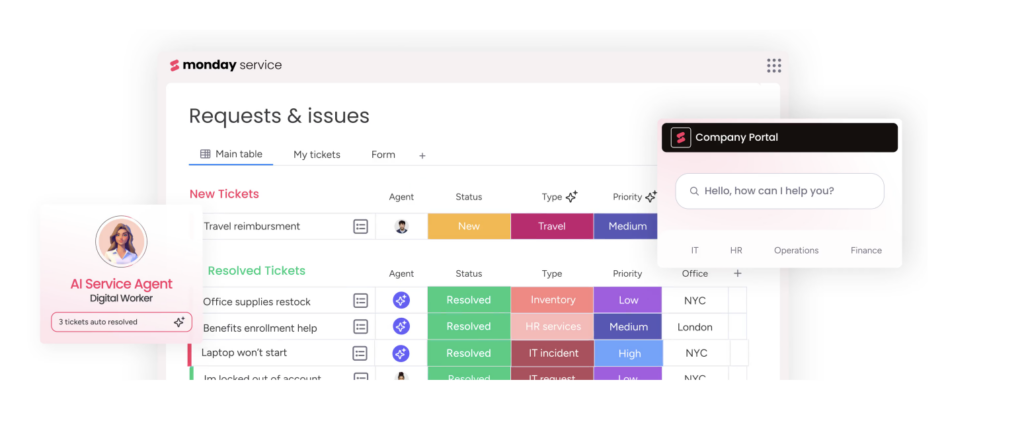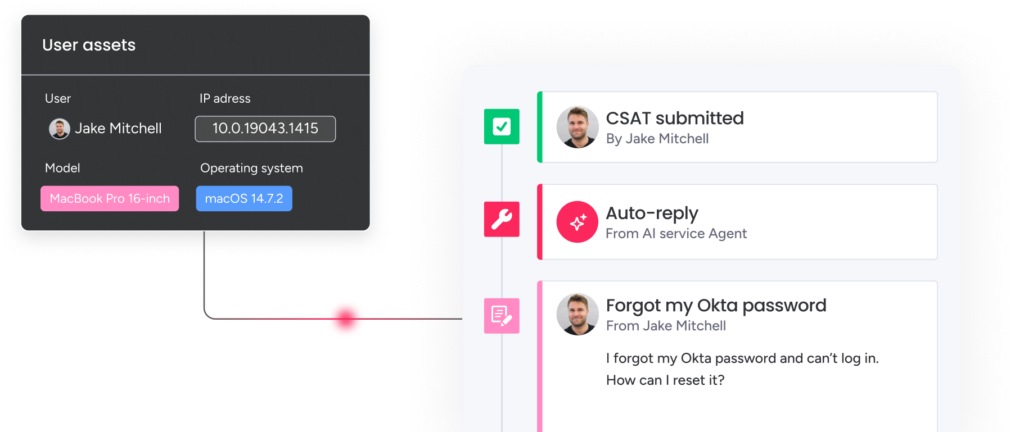What to Consider When Choosing the Right Service Management Software
Choosing the right service management software is a critical decision that can significantly impact your company’s efficiency, customer satisfaction, and overall service delivery. With a growing number of tools on the market, it’s important to understand which features truly matter and how to match them to your organization’s specific needs. Below are the key factors to consider before making your choice:
1. Ease of Use and User Experience
A well-designed user interface can dramatically reduce onboarding time and improve adoption across your team. Look for software that offers intuitive navigation, clear workflows, and accessible documentation. If your team needs to spend weeks learning how to use the system, productivity will suffer. Ideally, the platform should be easy enough for both technical and non-technical users to operate confidently.
Customization and Flexibility
Every business has unique processes. The software you choose should allow for customization of workflows, service categories, SLAs (Service Level Agreements), escalation paths, and reporting structures. Whether you’re managing internal IT services, customer support, or facilities management, flexibility is key to adapting the software to fit your existing operations rather than changing your processes to fit the tool.

3. Integration with Existing Systems
Your service management tool should seamlessly integrate with your existing software stack—such as CRM platforms, email systems, communication tools (like Slack or Microsoft Teams), and cloud storage services. Strong integration capabilities reduce data silos, minimize manual data entry, and improve cross-team collaboration. API access and native connectors are strong indicators of a scalable system.
4. Scalability and Performance
As your business grows, so will your service demands. Choose a platform that can scale with you—supporting more users, tickets, workflows, and automation without performance degradation. Cloud-based solutions typically offer better scalability, but it’s important to check whether there are limits on users, storage, or ticket volumes.
| Info | Monday.com | pipedrive | Hubspot* |
|---|---|---|---|
| Prices | Free Plan: $0, free forever Basic: $9 per seat per month Standard: $12 per seat per month Pro: $19 per seat per month Enterprise: Custom pricing | From $14.00 User/Month | The Hubspot CRM is free of charge |
| Test free of charge | 14 days | 14 days | 14 days |
| Suitable for | Small, medium-sized enterprises (S, M, L) | Small, medium-sized enterprises (S, M) | Small, medium-sized enterprises (M, L) |
| Number of contacts | Unlimited | Unlimited (Enterprise) | 200.000 (Enterprise) |
| Agile methods | Scrum Boards, Kanban Boards, Lean Project Management, Automated Workflows | Pipedrive Agile Framework | Scrum, Kanban |
| Mobile App | Yes | Yes | Yes |
| Support | Yes | Yes | Yes |
| Website | monday.com | pipedrive.com | hubspot.com* |
* We are a HubSpot affiliate and receive a commission when a purchase is made through this link.
5. Automation and AI Capabilities
Modern service management tools go beyond simple ticket tracking. Look for platforms that offer automation rules, AI-powered ticket routing, chatbot support, and knowledge base suggestions. These features can save time, reduce human error, and improve the end-user experience by providing faster and more accurate service.
6. Reporting and Analytics
Insightful reporting is essential for continuous improvement. The right software should offer dashboards, SLA tracking, satisfaction surveys, and detailed analytics to help you identify bottlenecks, optimize team performance, and make data-driven decisions. Custom reporting options are a bonus, especially for larger organizations with specific KPIs.

7. Security and Compliance
Ensure that the software meets your organization’s security requirements and industry regulations (such as GDPR, HIPAA, or ISO standards). Features like role-based access control, audit logs, data encryption, and regular security updates are non-negotiable for protecting sensitive information and maintaining trust.
8. Vendor Support and Community
Reliable customer support can make a big difference, especially during setup and in critical situations. Check whether the vendor offers 24/7 support, live chat, a knowledge base, onboarding assistance, or a community forum. A strong support structure ensures you’re not left stranded when issues arise.
9. Total Cost of Ownership (TCO)
Don’t just look at the monthly subscription fee. Consider setup costs, training expenses, required add-ons, upgrade fees, and long-term contract commitments. Some tools may appear cheaper at first but become costly as your needs grow. Focus on the value the tool provides relative to its cost.
Conclusion
The right service management software should do more than just track tickets—it should streamline your workflows, improve service quality, and scale with your business. By carefully evaluating your requirements against the factors above, you can choose a solution that delivers long-term value and supports your organization’s growth.
If you’re looking for a platform that combines ease of use, powerful automation, customizable workflows, and excellent support, Monday.com currently stands out as one of the best all-in-one service management tools on the market. It checks all the boxes—from integrations and scalability to reporting and user experience—making it a top choice for businesses of all sizes in 2025.






